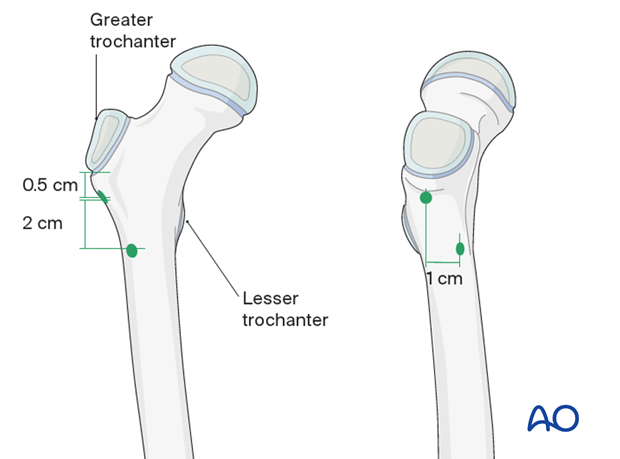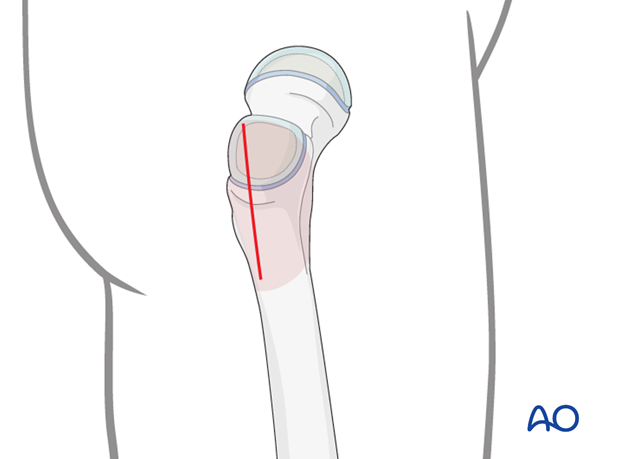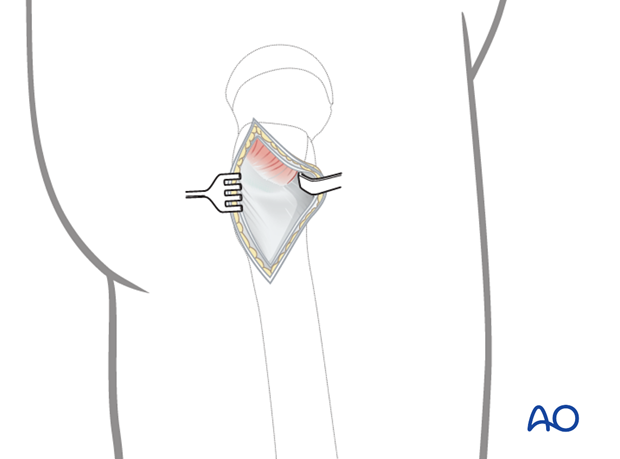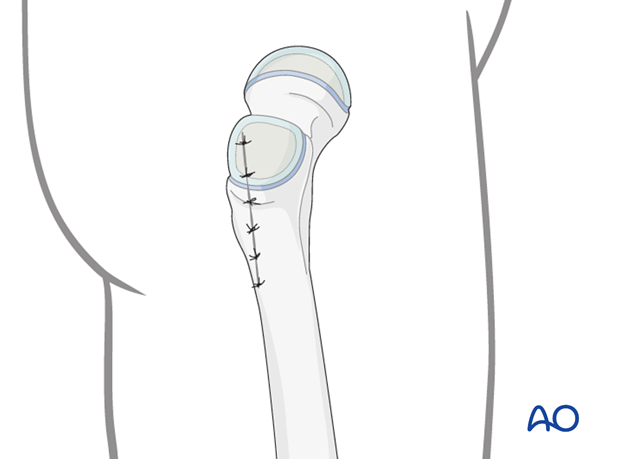ESIN entry points for antegrade nailing of the pediatric distal femur
1. General considerations
For fracture patterns stabilized with the ESIN technique using an antegrade approach and two elastic nails, the entry points are in the lateral proximal femur.
The usual entry points are 0.5–1 cm distal to the greater trochanteric growth plate.
Entry points should be at least 2 cm apart in the axial plane and at least 1 cm apart in the lateral plane. If they are too close, the cortex may split during insertion of the nails.
There is a lower risk of iatrogenic fracture if both entry points are made in the metaphyseal bone proximal to the lesser trochanter. Alternatives include entry points in the lateral aspect of the greater trochanter.

2. Skin incision
Make a 3–5 cm skin incision in the lateral aspect of the trochanteric region. The incision extends proximally from the entry points to allow sufficient space to advance the nails at an angle to the cortex.

3. Deep dissection
Spread the fascia and muscle to expose the anterolateral cortex of the femur and the greater trochanter.

4. Wound closure
After careful hemostasis, close the skin and subcutaneous tissues in a routine manner.














